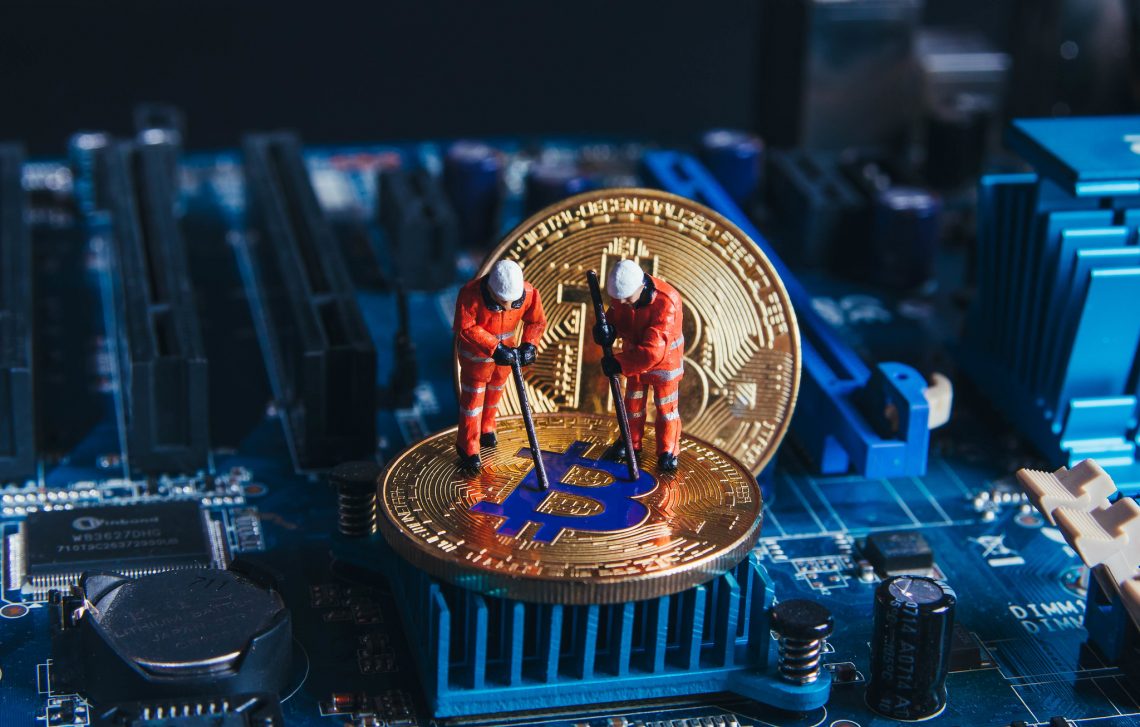Bitcoin mining is the backbone of the Bitcoin network, ensuring its security, decentralization, and integrity. As a process that involves solving complex mathematical problems and validating transactions, Bitcoin mining can be both challenging and rewarding. This comprehensive guide will cover the ins and outs of Bitcoin mining, exploring how it works, the hardware and software required, and the strategies to maximize profitability.
Section 1: Understanding Bitcoin Mining
What is Bitcoin mining?
Bitcoin mining is the process of verifying and adding transactions to the Bitcoin blockchain. Miners use powerful computers to solve complex mathematical problems, and once a problem is solved, a new block of transactions is added to the blockchain. In return, miners are rewarded with newly minted bitcoins and transaction fees.
How does mining work?
The primary function of mining is to maintain the integrity of the Bitcoin network by validating transactions. Miners compete to solve a cryptographic problem called Proof of Work (PoW). The first miner to solve the problem broadcasts the solution to the network. Other miners verify the solution, and if it’s correct, the new block is added to the blockchain, and the miner is rewarded with bitcoins and transaction fees.
The role of mining difficulty
Mining difficulty is a measure of how hard it is to solve the PoW problem. As more miners join the network and computing power increases, the difficulty adjusts to ensure that new blocks are added to the blockchain at a consistent rate (approximately every 10 minutes). This self-regulating mechanism ensures the stability and security of the Bitcoin network.
Section 2: Bitcoin Mining Hardware
CPUs
In the early days of Bitcoin, mining could be done using a computer’s central processing unit (CPU). However, as the network grew and competition increased, CPUs quickly became obsolete due to their limited processing power.
GPUs
Graphics processing units (GPUs) offered a significant improvement over CPUs for Bitcoin mining. GPUs are designed for parallel processing, which makes them more efficient at solving the PoW problems. Despite being more powerful than CPUs, GPUs have also become less competitive as specialized mining hardware has emerged.
ASICs
Application-specific integrated circuits (ASICs) are devices specifically designed for Bitcoin mining. These specialized machines offer significant advantages over GPUs in terms of power consumption and mining efficiency. As a result, ASICs have become the standard for Bitcoin mining and dominate the mining industry.
Section 3: Bitcoin Mining Software
Choosing the right mining software is essential for optimizing your mining operation. Popular options include:
CGMiner
CGMiner is an open-source, multi-platform mining software that supports a variety of mining hardware, including ASICs and GPUs. It offers advanced features such as fan speed control, overclocking, and remote interface capabilities.
BFGMiner
BFGMiner is similar to CGMiner but is designed specifically for ASIC mining hardware. It offers a range of features, including integrated overclocking and support for mining multiple cryptocurrencies.
EasyMiner
EasyMiner is a user-friendly graphical frontend for CGMiner and BFGMiner, designed for beginners. It offers a simple interface and supports both solo and pool mining.
Section 4: Mining Pools
Mining pools are groups of miners who combine their computing power to increase their chances of solving a PoW problem and earning rewards. Pool members share the rewards based on their contributed hash power. Popular mining pools include Slush Pool, F2Pool, and Antpool.
Section 5: Maximizing Mining Profitability
Choosing efficient hardware
Investing in efficient ASIC miners is crucial for maximizing profitability. Be sure to consider factors such as hash rate, power consumption, and initial cost when selecting a mining device. Some popular ASIC models include Bitmain’s Antminer series and MicroBT’s Whatsminer series.
Minimizing energy costs
Energy consumption is a significant factor that impacts mining profitability. Choosing energy-efficient hardware and seeking low-cost electricity sources can help reduce operational costs. Some miners even relocate to countries with lower energy prices or use renewable energy sources like solar power to further decrease costs.
Selecting the right mining pool
Joining a reputable mining pool can increase your chances of earning rewards, as it combines the hash power of multiple miners. When choosing a mining pool, consider factors such as pool fees, payout schemes, and the pool’s reputation. It’s also essential to diversify by joining multiple pools to reduce the risk of potential downtime.
Regularly monitoring and optimizing your mining setup
To maintain profitability, it’s essential to keep an eye on your mining setup and make adjustments as needed. This includes monitoring the temperature of your hardware, adjusting fan speeds, and updating software for optimal performance. Additionally, stay informed about changes in mining difficulty, network hash rate, and Bitcoin price to make timely decisions about your mining strategy.
Tax considerations and legal compliance
It’s crucial to understand the tax implications of Bitcoin mining in your jurisdiction. In many countries, mining income is considered taxable, and miners are required to report their earnings. Be sure to consult with a tax professional to ensure compliance with local regulations.
Section 6: The Future of Bitcoin Mining
Environmental concerns and sustainability
As Bitcoin mining consumes a significant amount of energy, it has raised concerns about its environmental impact. In response, many mining operations are turning to renewable energy sources and developing energy-efficient mining technologies to reduce their carbon footprint.
Potential shift to Proof of Stake (PoS)
Some cryptocurrencies, like Ethereum, are transitioning from PoW to Proof of Stake (PoS) consensus mechanisms to reduce energy consumption and improve scalability. While it’s unlikely that Bitcoin will shift to PoS in the near future, it’s essential to stay informed about potential changes in the mining landscape.
Conclusion:
Bitcoin mining is an integral part of the cryptocurrency ecosystem, providing security and stability to the network. While mining can be profitable, it requires careful planning, investment in efficient hardware, and continuous optimization of your mining setup. By understanding the process, selecting the right hardware and software, joining reputable mining pools, and adopting strategies to maximize profitability, you can navigate the world of Bitcoin mining and contribute to the decentralization and security of the network.
